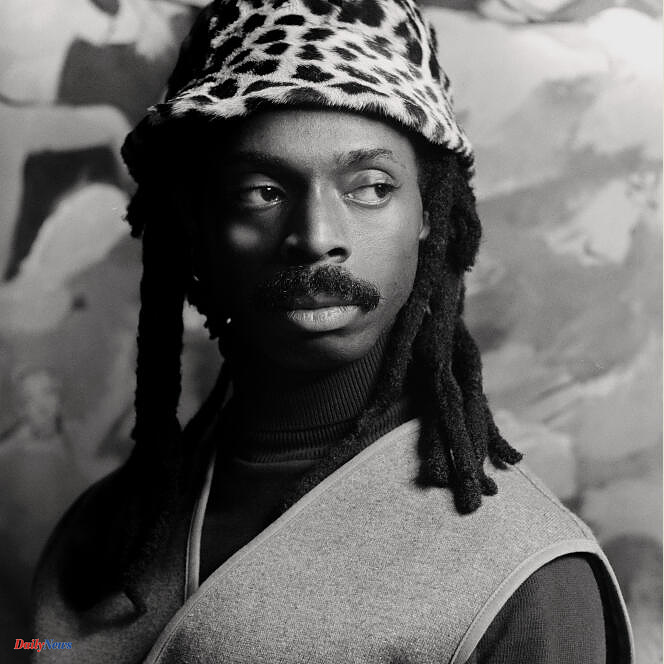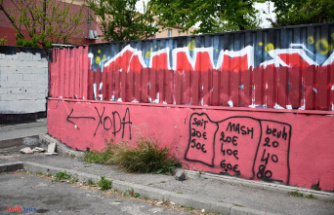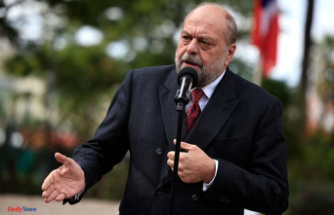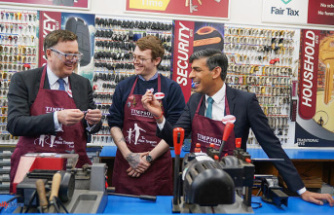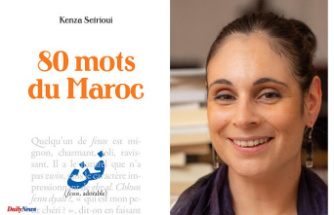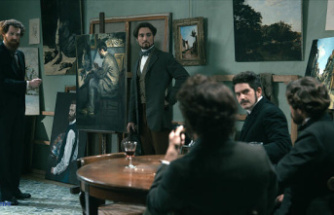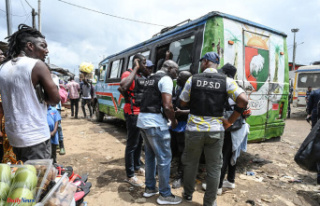A whole palette of bold colors for an expression that may seem naive. Cameroonian Francis Essoua Kalu is exhibiting his latest works in a gallery for the first time, in Paris, at the 193 Gallery. Around twenty paintings where we discover his signature, mixing dream and reality. The painter abolishes angles and edges, proclaims his freedom in the flexibility of lines and shapes freed from gravity, perspective and proportion. The layers of color model the bodies, without shadows, by combining flat areas of warm and cold tones.
Francis Essoua Kalu chose “Precocious Child” as his artist name to assert, he says, the apparent “innocence of [his] pictorial writing”. For him, “the eyes of a child do not see lies.” Arriving in France at the age of 9 – he is now 35 – because his parents wanted him to continue his schooling in the best conditions, the Douala native from the Sawa community grew up in the Paris region.
France is also the hope of a "safe place", a place where you can be yourself despite the difficulties of life and become an adult while keeping your child's soul", as Roger Niyigena points out. Karera, co-curator of the event with Mary-Lou Ngwe-Secke. The title of the exhibition, “Oasis of Abundance”, suggests this hope: a celebration of life, particularly that of everyday resourceful people. Francis Essoua Kalu wants to question the place of the “foreigner” while making the colors of the diasporas shine, essential to the proper functioning of society.
“Expose me.”
“I draw my inspiration from scenes from everyday life. This is where I find the most important emotions and details,” explains the visual artist. The paintings Château-Rouge, At the Porte de la Chapelle or Les Nounous are a perfect example with their bright, almost primary tones. On the other hand, when it comes to more serious themes, as in Les Naufragés, the artist's palette is reduced to the essential and the subjects are simply sketched. “When the colors are absent, they scream at us an overwhelming truth: the depersonalization of the migrants who disappeared in the Mediterranean,” notes Mary-Lou Ngwe-Secke.
It was in 2019 that the 193 Gallery discovered Francis Essoua Kalu. The painter made a name for himself by staging his paintings in emblematic places in Paris, such as the Center Pompidou, the Louvre, the Palais de Tokyo, the Place de la République or the Champs-Elysées, sitting on a stool. wooden frame with an “Expose Me” sign at its feet. A way of making yourself known and highlighting the difficulty of finding a gallery to present your works. An initiative that will have a small effect on social networks.
Self-taught, the young man owes his beginnings to his uncle Malam, an internationally renowned sculptor, a graduate of the National School of Art and Design in Nancy, who notably participated in the Dakar Biennale in 2004 (Dak'Art) and at the first triennial meeting of “La Force de l’art” at the Grand Palais in Paris in 2006, which offered a journey through contemporary art thanks to works by 200 artists exhibited over 7,000 m2.
“My uncle is a looker and a thinker of the present. When he was in Cameroon [he now lives in France], his exhibitions and artistic interventions were widely talked about because they denounced disturbing social facts: refusal of aid to communities in need after road accidents. life, rapes, assassinations… He gave me the courage and the strength to transcribe the world as it is,” Francis Essoua Kalu likes to recall.
“A pop aesthetic”
When he was 19, he became his uncle’s assistant. Then he began painting four years later, “with oil paints that [his] girlfriend at the time gave [him] for Christmas.” Without forgetting the advice, stories and tales that his grandmother told him and which he listened to attentively.
For Christophe Person, founder and director of the gallery of the same name specializing in contemporary African art, “Francis Essoua Kalu has an eye-catching pop aesthetic, close to illustration, making his works narrative and accessible. He thus renews the remarks of the artists of Congolese popular painting [Chéri Chérin, Moké or Amani Bodo], even of Nigerian moderns such as Emmanuel Ekong Ekefrey or even of the post-cubism of the Ghanaian Kofi Bright Awuyah. He multiplies partnerships and knows how to use new media to make himself known. A phenomenon to follow, therefore.”
The market seems to appreciate the work of the visual artist: around fifteen of the works exhibited happily exceed 10,000 euros, including Esua Esua a yabe, Essoua Essoua est née, offered at 24,000 euros, and Les Naufragés, at 25,000 euros. “It’s all the more interesting since the market around Francis Essoua Kalu’s paintings has developed outside the gallery circuit,” underlines Mary-Lou Ngwe-Secke.
Finally, the young Cameroonian participates in the Walk in Paris label, founded in 2013 by Gary Neveu and Léo Walk, two multidisciplinary Parisian artists. The brand, which defines itself as chic streetwear, is inspired by 1970s fashion and 1990s hip-hop culture, and extends to the world of music and art. Francis Essoua Kalu is one of the models. He also walked for Louis Vuitton on June 20, 2023 on the Pont-Neuf, in Paris, during the first show of Pharrell Williams, new artistic director of the brand's men's collections.

